RAL Space carries out an exciting range of world-class space research and technology development. We have significant involvement in over 210 space missions and are at the forefront of UK space research.
Four RAL Space scientists and engineers logged on to Reddit on Friday 6th October 12.00 to 15.00 BST to answer your questions. Our Reddit AMA is now finished and can be found here.
To date, our Reddit AMA has received 32 upvotes and 444 views! This made it one of the more popular posts that day on the space subreddit. In total we received eight questions to which we gave 13 original and unique answers written by our participants, who all did an amazing job.
Our participants were:
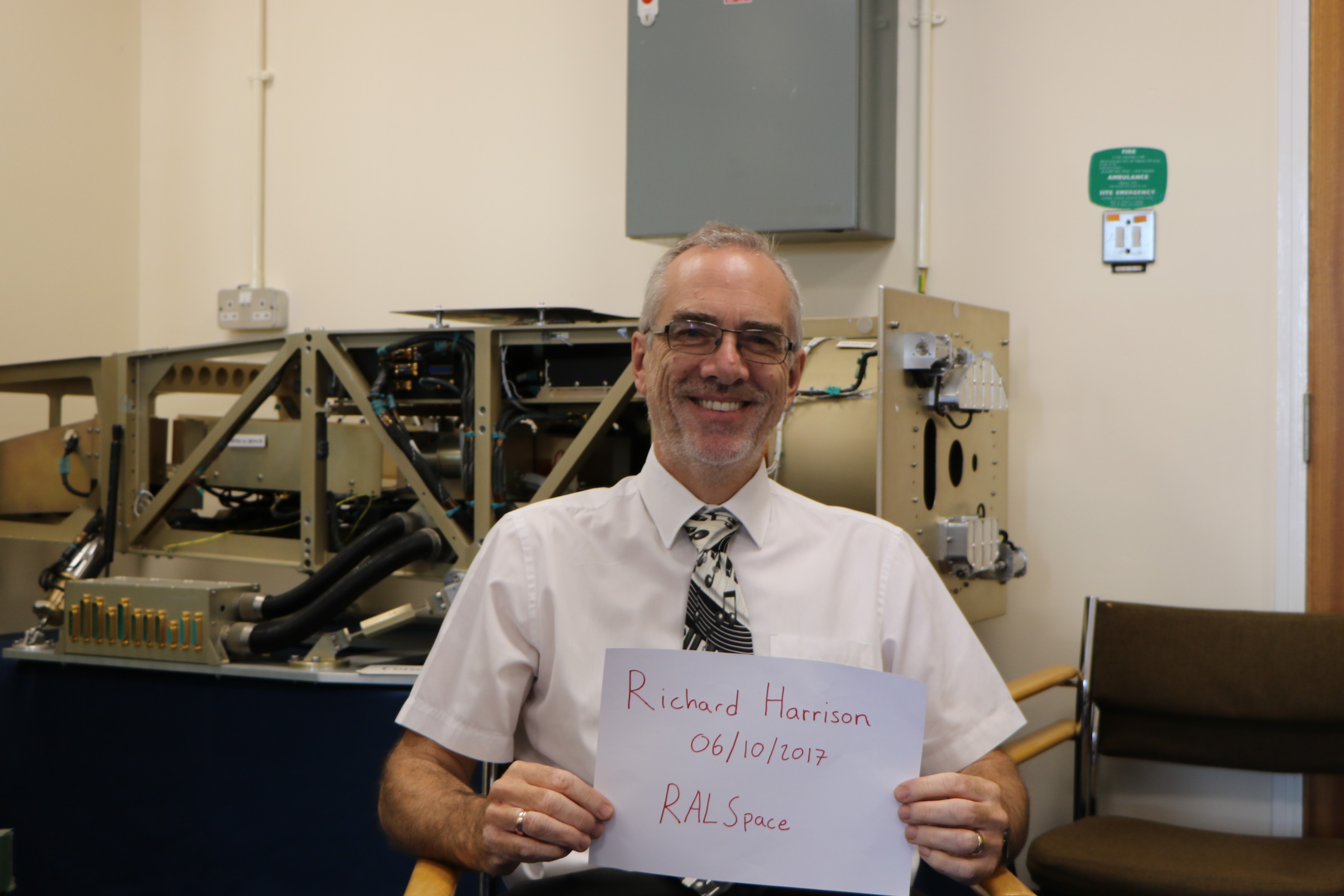 Professor Richard Harrison, Chief Scientist:
Professor Richard Harrison, Chief Scientist:
Professor Harrison is an established solar physicist, with over 37 years' experience in the study of the complex solar atmosphere, in particular how the Sun ejects vast clouds known as coronal mass ejections into space and how they can interact with the Earth. He led the Space Physics Division at RAL from 2003 to 2015, overseeing space science projects in astrophysics, solar physics and space environment physics, before taking on the role of RAL Space Chief Scientist. He has been Principal Investigator of key science instruments aboard the ESA SOHO and the NASA STEREO spacecraft, and co-investigator of numerous space instruments, specialising in solar UV spectral observations and coronal and heliospheric imaging. He is author of over 220 research papers in the professional literature and was awarded the MBE and Royal Astronomical Society (RAS) Chapman medal, both in 2004, and the RAS Service Award in 2017. He also serves on the Space Environment Impact Expert Group (SEIEG) that advises the UK Government on space weather impacts and mitigation.
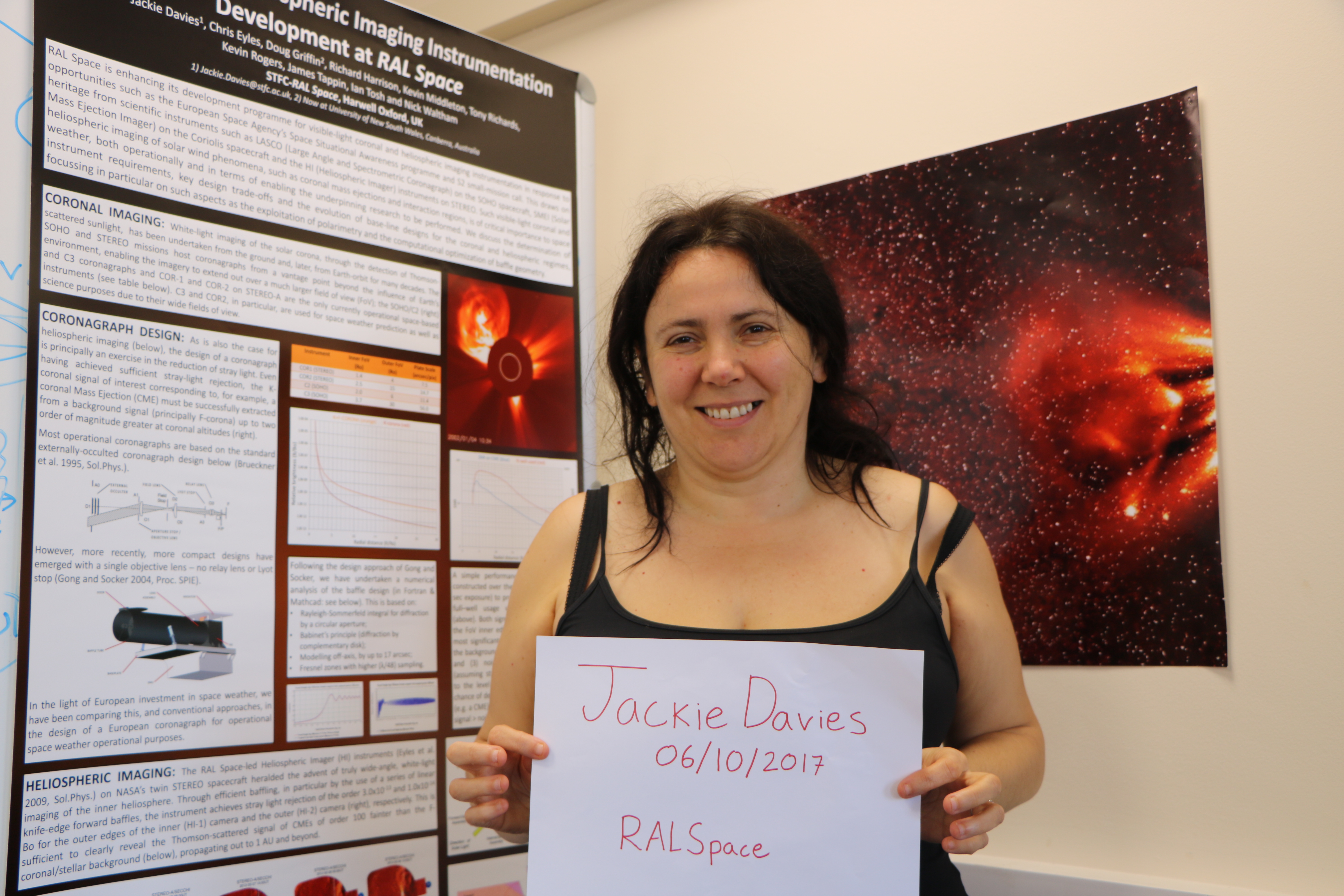 Dr Jackie Davies, Space Plasma Physicist:
Dr Jackie Davies, Space Plasma Physicist:
Dr Jackie A. Davies is a space plasma physicist with over 20 years' experience in a range of major ground-based and space missions. She has a publication list comprising almost 150 peer-reviewed articles, over a diverse but related range of topics that include studies of the variability of the near-Earth plasma and magnetic field environment (the so-called ionosphere and magnetosphere) and, more recently, studies of large-scale plasma structures in the Sun's expanding atmosphere (the solar wind). Jackie is the Project Scientist for the RAL Space-led Heliospheric Imagers on NASA's STEREO mission, instruments that can image the evolution of these vast solar wind structures as they travel outwards from the Sun. She is also science lead for ESA's RAL Space-led SCOPE study that is looking at novel designs for a space-borne coronagraph. Jackie leads an international consortium that are designing a whole package of imaging instruments that will potentially form the basis of an ESA mission to monitor space weather in real-time.
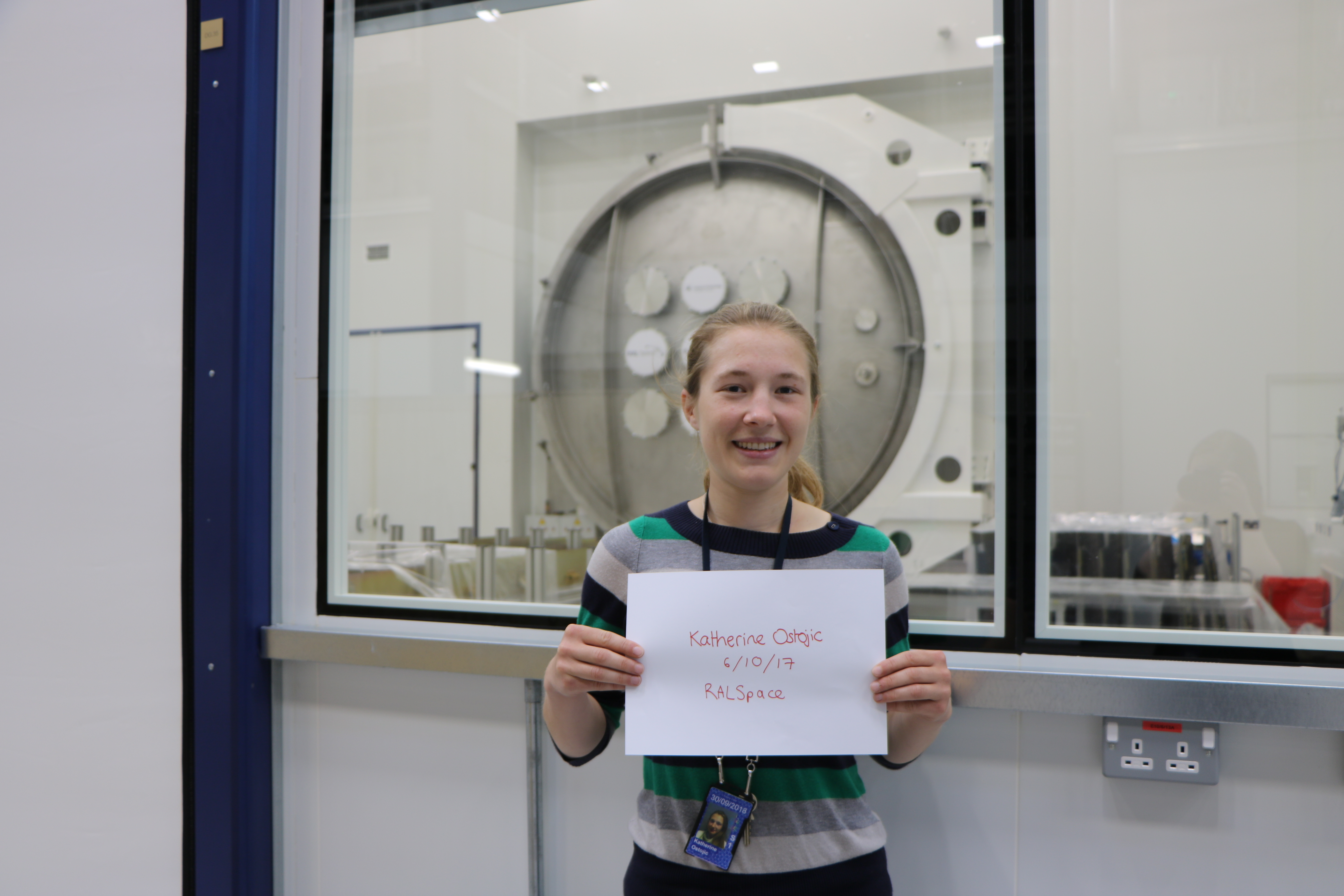 Katherine Ostojic, Thermal Engineer:
Katherine Ostojic, Thermal Engineer:
Katherine Ostojic is a spacecraft thermal engineer. She graduated from Bristol University 2 years ago with a degree in Aerospace Engineering, and joined the STFC graduate scheme. Since starting in RAL Space, she has worked on the thermal design of a calibration rig for the ground based testing of the Microwave Sounder (MWS) instrument for the MetOp-SG spacecraft. She has also assisted with thermal vacuum testing of various instruments including the Solar Orbiter Spectral Imaging of the Coronal Environment (SPICE) instrument and the Broad Band Radiometer (BBR) instrument which will go on the EarthCARE spacecraft.
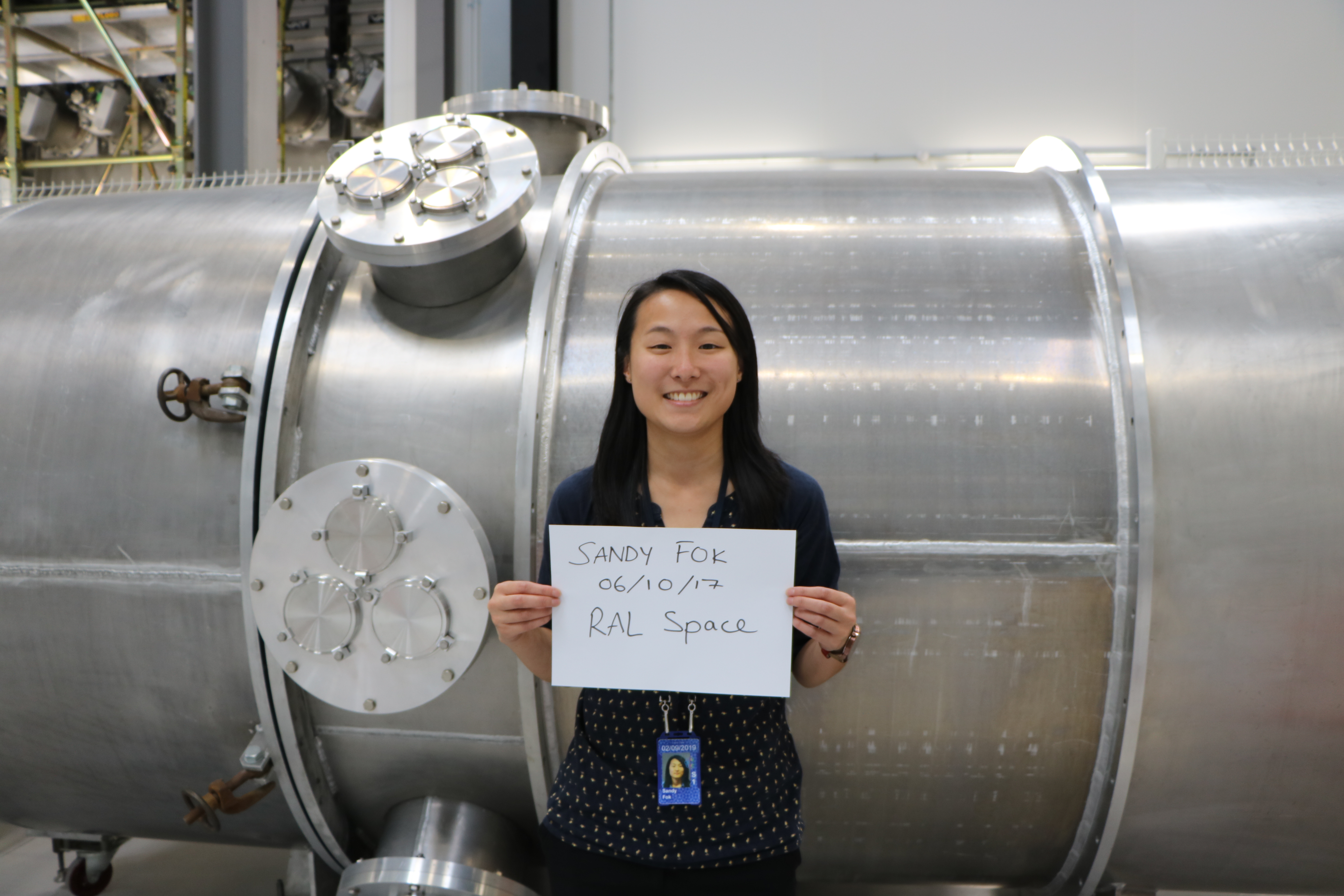 Sandy Fok, Mechanical Engineer:
Sandy Fok, Mechanical Engineer:
Sandy Fok is a mechanical engineer with a background in ground based calibration equipment for space instruments who has been working at RAL Space for four years. She is currently working on the MeteoSat Third Generation Blackbody Calibration Rig which involves the design of test equipment to be used in vacuum and operate at extreme temperatures ranging from -170°C to 100°C. Previously, she has been involved in developing technology capable of measuring thermal expansion and contraction of materials using laser interferometry.
Cubs, Beavers and Scouts asked us their questions:
We celebrated the start of World Space Week by hosting a Space Explorers night for over 50 cubs, beavers & scouts. The energetic and enthusiastic group took part in fun activities which included a planetarium show and dressing up in clean room suits. The group asked us lots of questions about space which linked nicely to our Reddit Ask Me Anything (AMA):
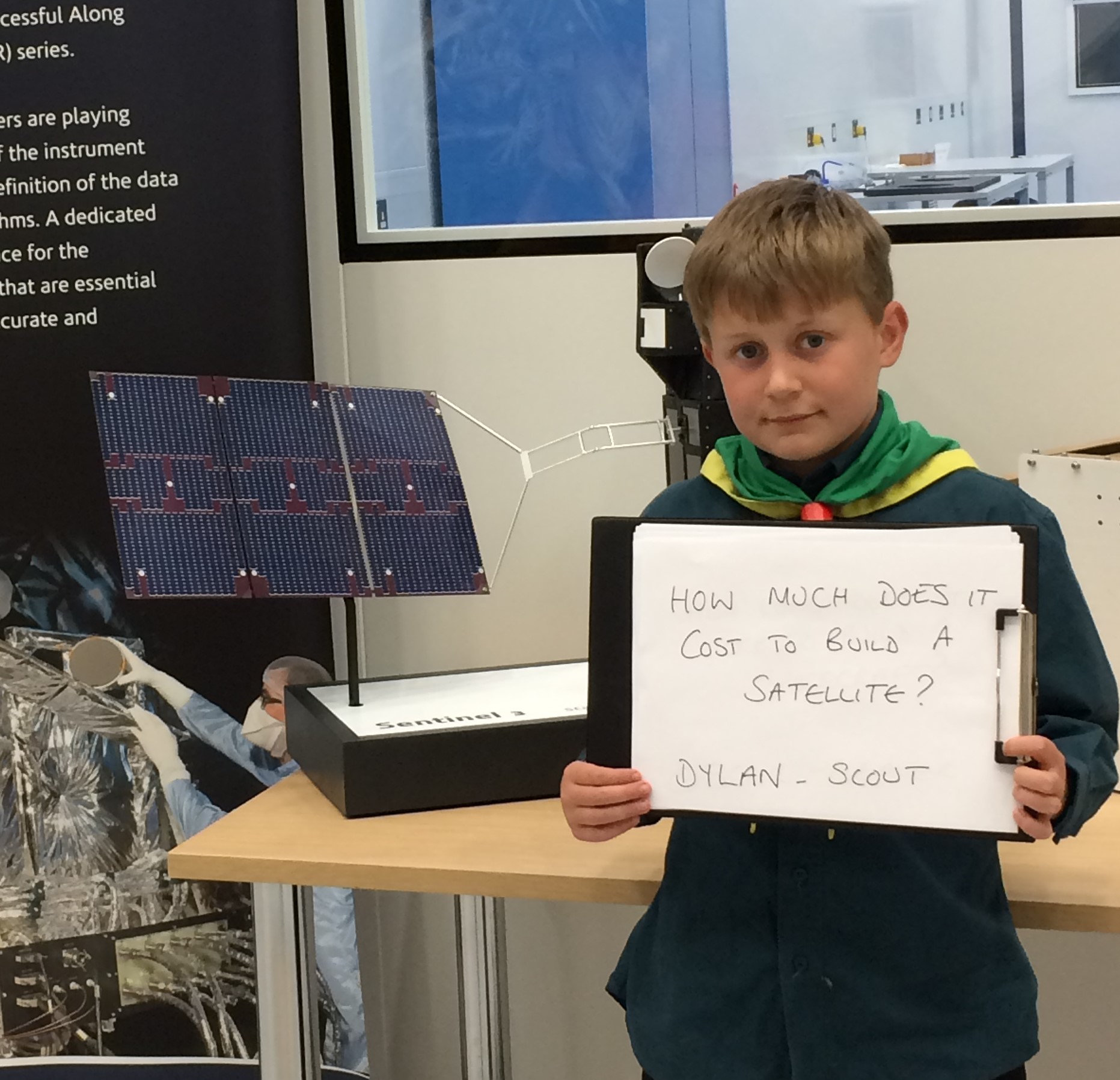 Dylan, a scout, asked us 'How much does it cost to build a satellite?'
Dylan, a scout, asked us 'How much does it cost to build a satellite?'
Martin Caldwell, one of our Systems Engineers, replied:
A
spacecraft is made up of many science instruments. A single science instrument,
such as a camera, will usually cost more than £10 million as that includes all
the design and development. This can take many groups of people over many
years. The cost is even greater when you take into account launch costs and
costs to operate it in space (i.e. to employ people at the 'ground station', to
command the spacecraft and receive the data). A medium sized spacecraft can
cost around £500 million!
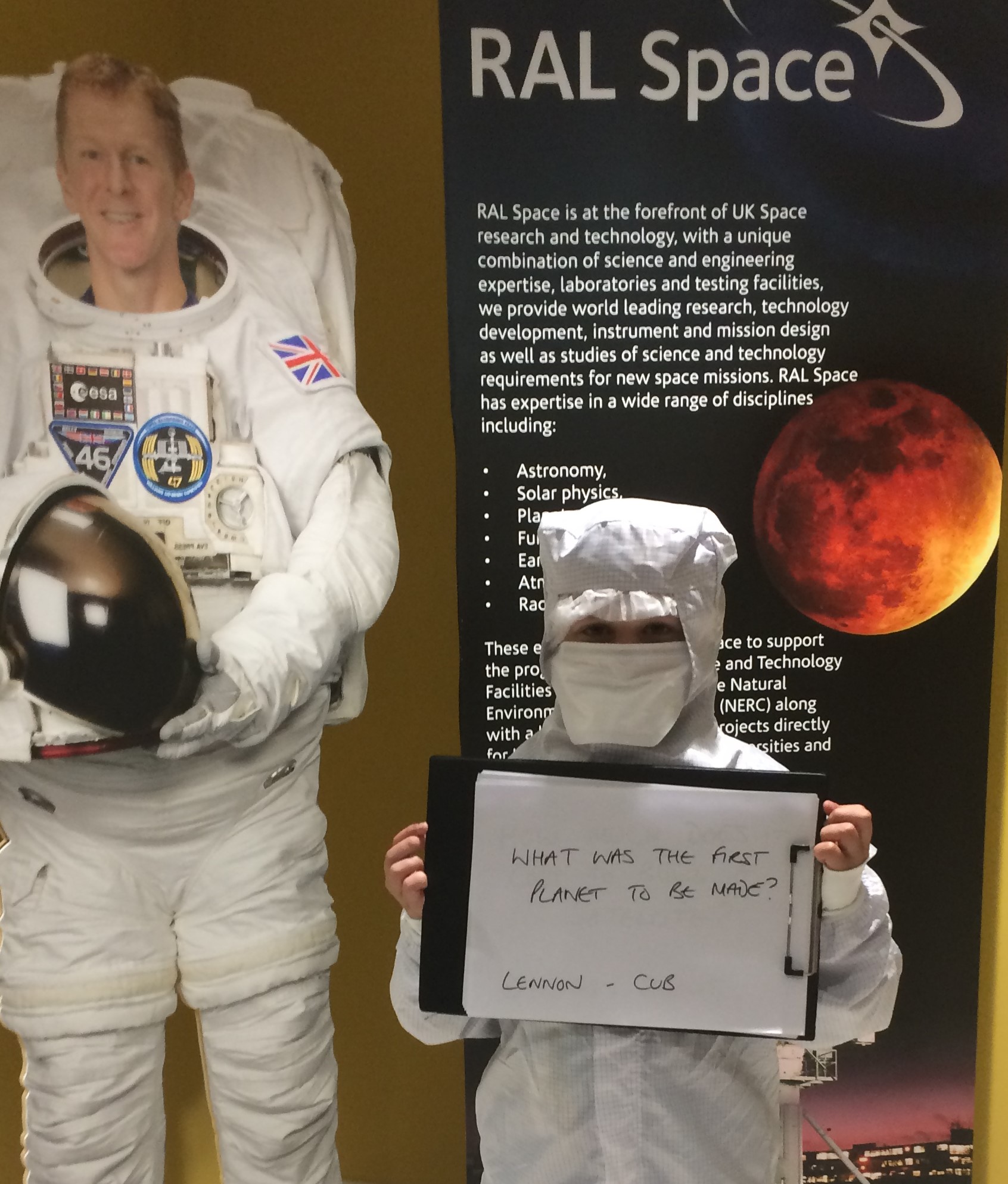
This is Lennon, a Cub, who asked 'What was the first planet to be made?'
Chris Pearson, a Astrophysisist here at RAL Space, answered:
The first planets to form are usually the biggest ones because they have gobbled up the majority of the dust and gas left over when a central star forms.
So when our Solar System was created, our Sun formed at the middle and it was surrounded by a disc of leftover material. This leftover material slowly started to accumulate under the force of gravity to form the gas giant Jupiter. Saturn formed around the same time and the other gas bodies Uranus and Neptune formed soon after. The inner rocky planets (Mercury, Venus, Earth Mars) formed last when there was only a small amount of rocky material remaining.
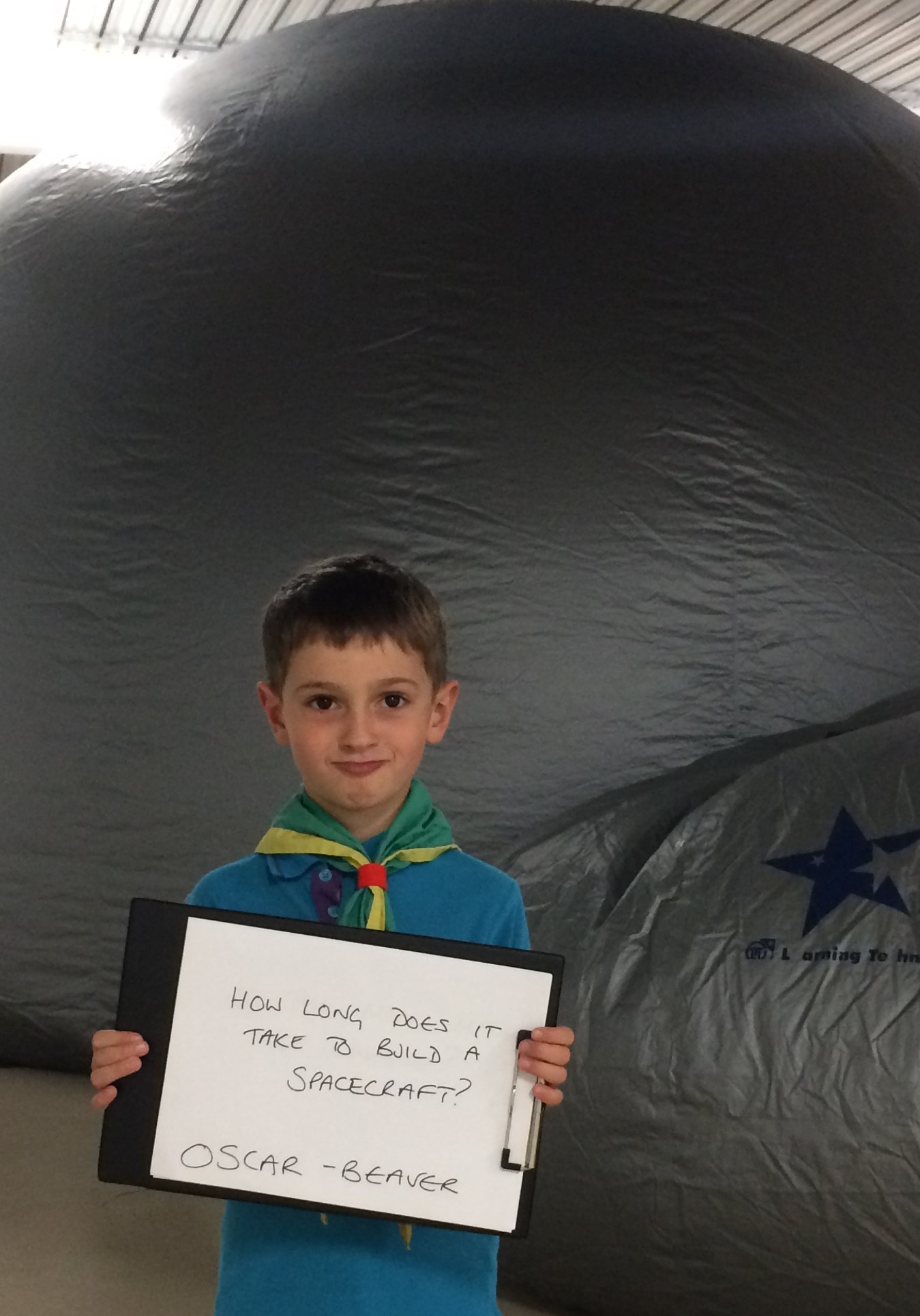 Oscar, a Beaver, asked us 'How long does it take to build a spacecraft?'
Oscar, a Beaver, asked us 'How long does it take to build a spacecraft?'
Martin Caldwell answered:
It takes at least a couple of years to build a spacecraft for scientific missions. This is mainly because new spacecraft will need new technologies and parts which all need to be built and tested before the spacecraft can be assembled. Unlike mass-produced things like cars, which maybe take only a few days from off-the-shelf parts, each spacecraft is unique and therefore needs a lot of testing. Scientists, technologists and engineers have only one chance to make absolutely sure that the spacecraft functions as it should before sending it into space so this testing period is extensive and long. It would be no good to discover mistakes or errors when the spacecraft is thousands of miles away in space.
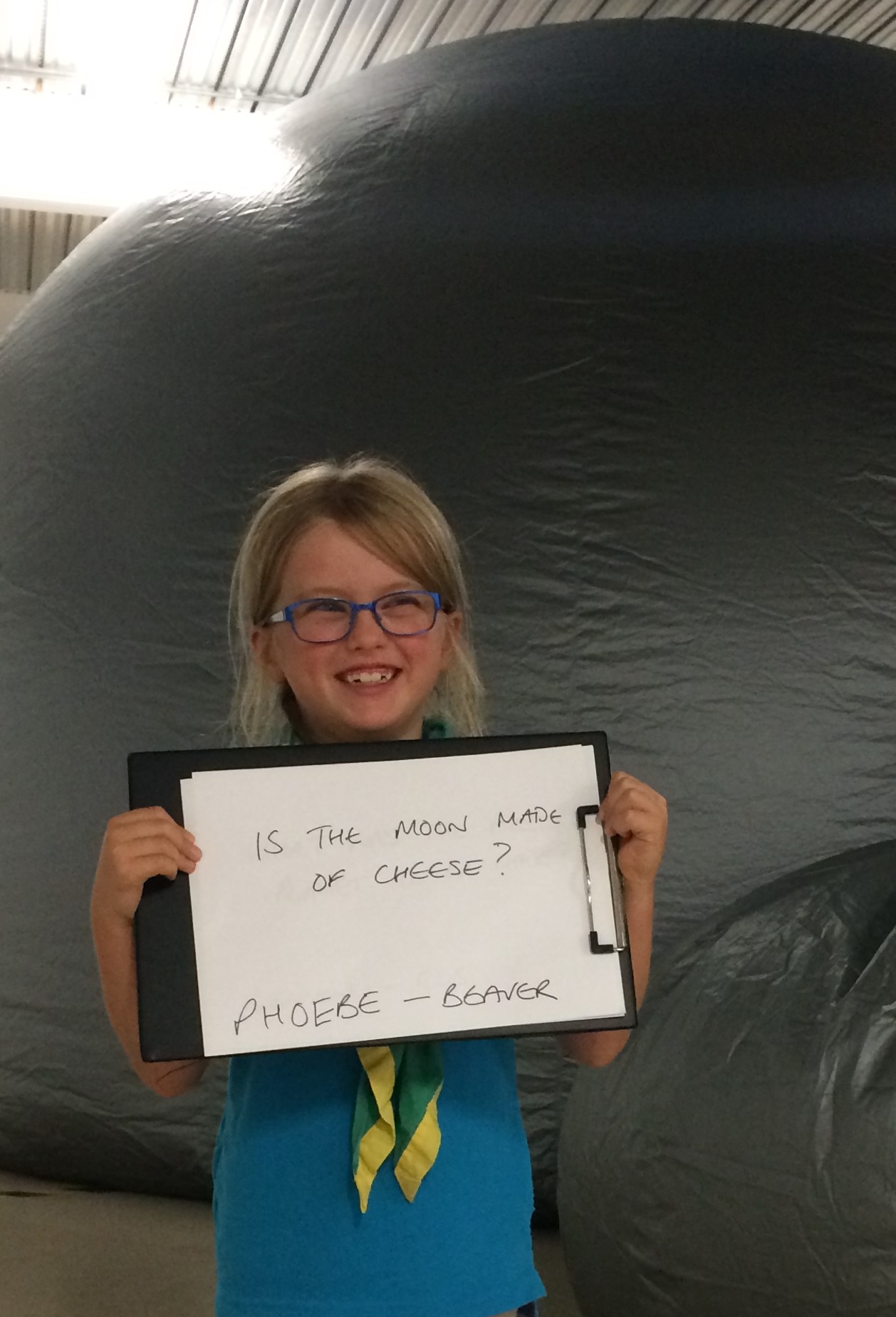
Phoebe, also a Beaver, asked us 'Is the Moon made of cheese?'
To which we replied:
Unfortunately, it isn't. Our moon is made of very similar materials and elements as Earth, such as oxygen, iron and aluminium. Like Earth, we think the moon has a melted centre made of iron (like a Cadbury Creme Egg.) This molten core is then surround by a 'mantle', where many layers of lava have cooled and hardened over time to form a hard crust. The moon's surface is then covered in what we call 'lunar soil', a layer of very fine dust-like bits of rock which looks like grey snow. For many years the moon has been hit by asteroids, meteoroids and comets creating big holes called craters and it is this that gives our moon its cheese-like texture.
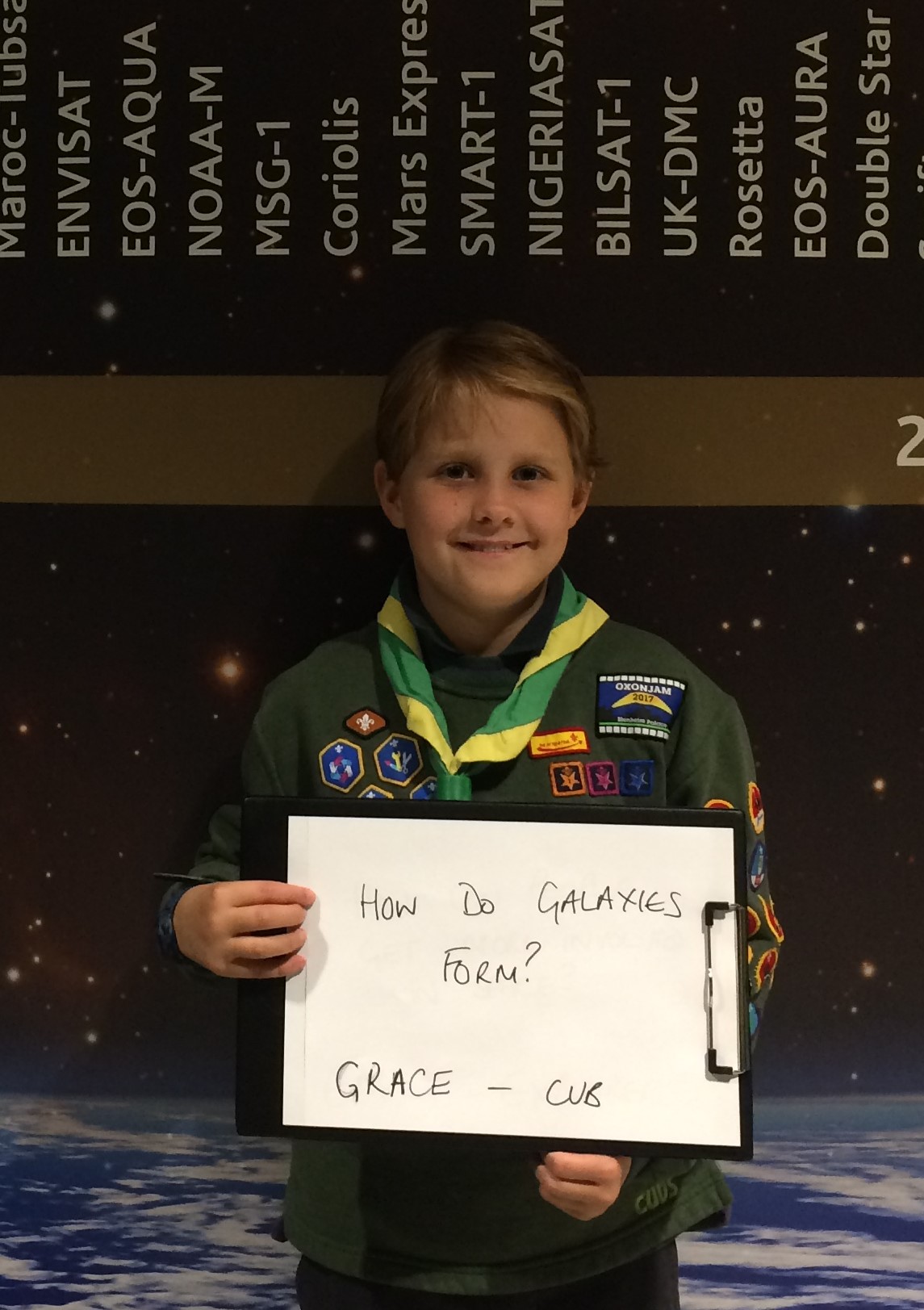
Grace, who is a Cub, asked us 'How do galaxies form?'
Chris Pearson replied:
Galaxies are made up of 100's of billions of stars and gas all rotating around the centre of the galaxy.
Its all about the gravity, for example, stars are formed when clouds of gas become so massive that gravity takes over and compresses the gas so much that the stars become dense enough to 'turn-on' their nuclear reactions and shine.
Galaxies are formed within haloes of invisible dark matter. The dark matter's gravity attracts surrounding dust and gas to make a galactic disk of material that will go on to make the stars. The first thing to form inside the dark matter halo is a super-massive black hole (from millions to billions the mass of our Sun) that basically will control the creation of the galaxy. Everything in a galaxy will rotate around its own super-massive black hole at its centre (even our own Milky Way galaxy).
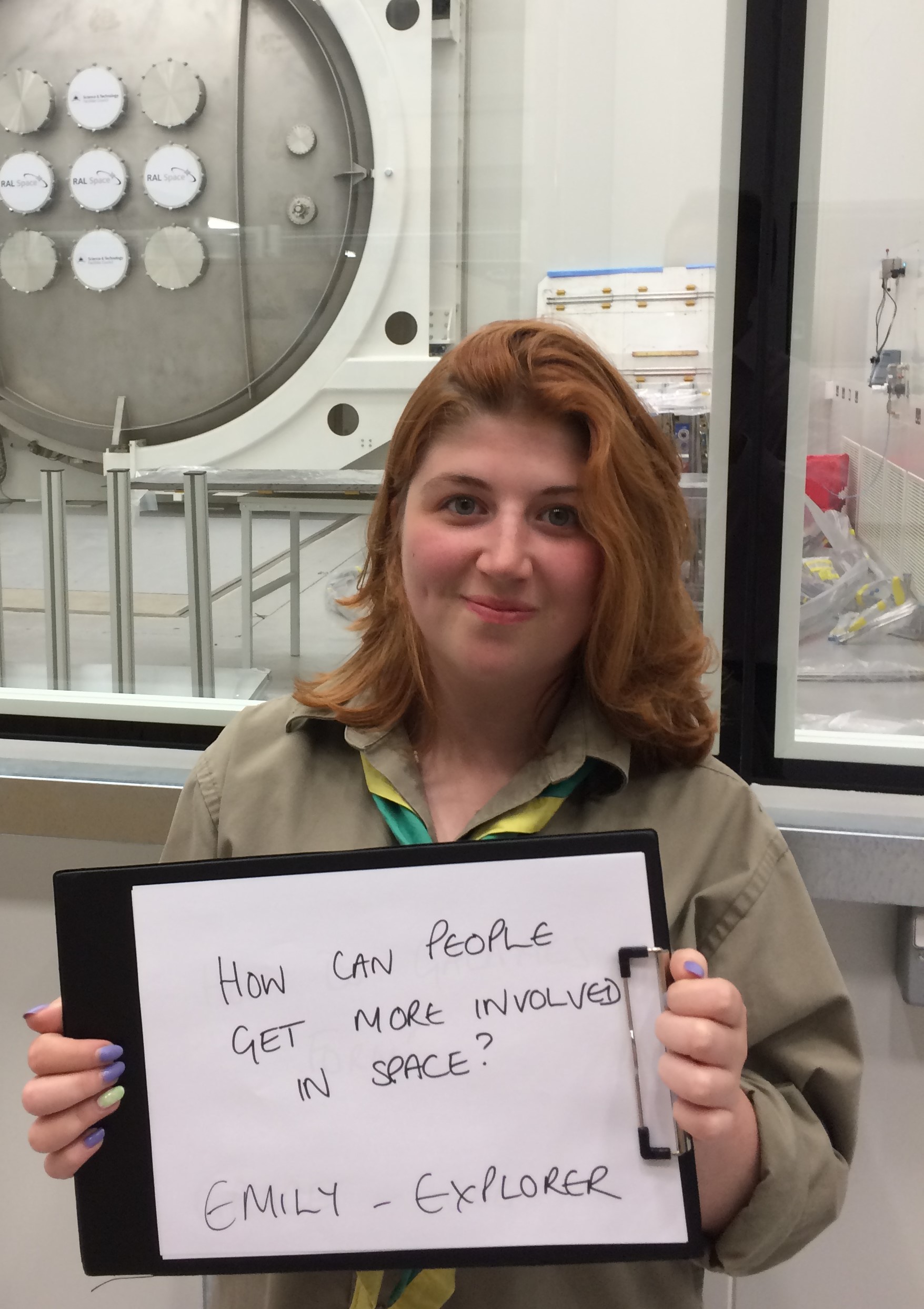
This is Emily, an Explorer, who asked 'How can people get more involved in space?'
To which we answered:
If you're looking to expand your knowledge of physics or experience science in new exciting ways, then RAL has a whole range of public access days for all ages and backgrounds (see here for more info). If you're looking to start a career in physics, technology and engineering then our apprentice scheme is a great place to start when you leave school. We also have a brilliant graduate scheme, PhD training and work experience schemes, so we cover all stages of the education system. Check out STFC's Skills section on their website to find out more.
For more information please contact: RAL Space Enquiries
